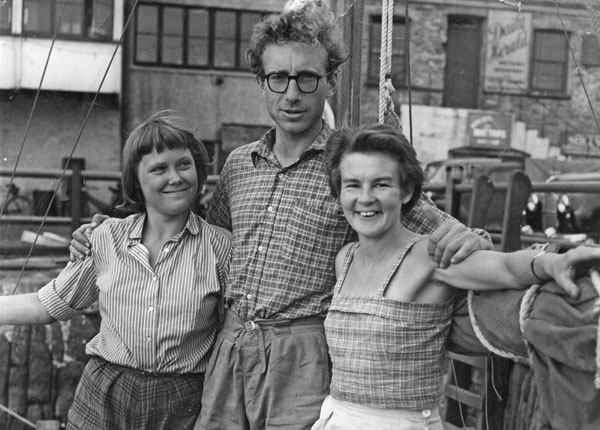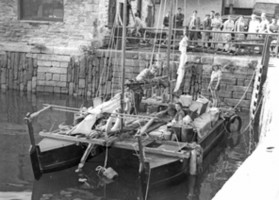60 years ago, on the 27 September 1955, James Wharram set sail from Falmouth aboard a self-built 23ft 6in flat-bottomed catamaran
60 years ago, on the 27 September 1955, James Wharram set sail from Falmouth aboard a self-built 23ft 6in flat-bottomed catamaran called Tangaroa with two German girls as crew, with the aim of proving the double canoe design was a seaworthy vessel.
In 1948 Thor Heyerdahl made the famous Kontiki voyage across the Eastern Pacific from Peru to the Tuamotu Islands ‘proving’ that the inhabitants of the central Pacific islands must have come from South America by sailing raft rather than from south east Asia by canoe craft.
As a disciple of Eric de Bisschop, a Frenchman discredited for his links to the Vichy regime, James Wharram was in Falmouth about to cross the Bay of Biscay and on to Las Palmas to sail across the Atlantic Ocean to Trinidad. An ambitious project to prove Thor Heyerdahl was wrong.
Following that first voyage, Wharram went on to build a 40ft ‘V’-hulled catamaran in Trinidad before sailing to New York and across the North Atlantic back to the UK where he became a full-time catamarn designer. Now aged 87, Wharram is still designing and build catamarans with the same philosphy of sea-worthiness, ease of building and low-cost sailing.





